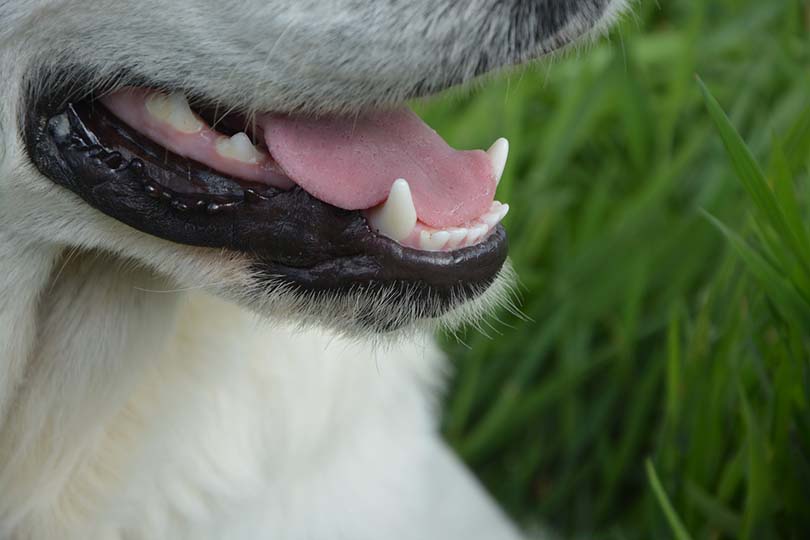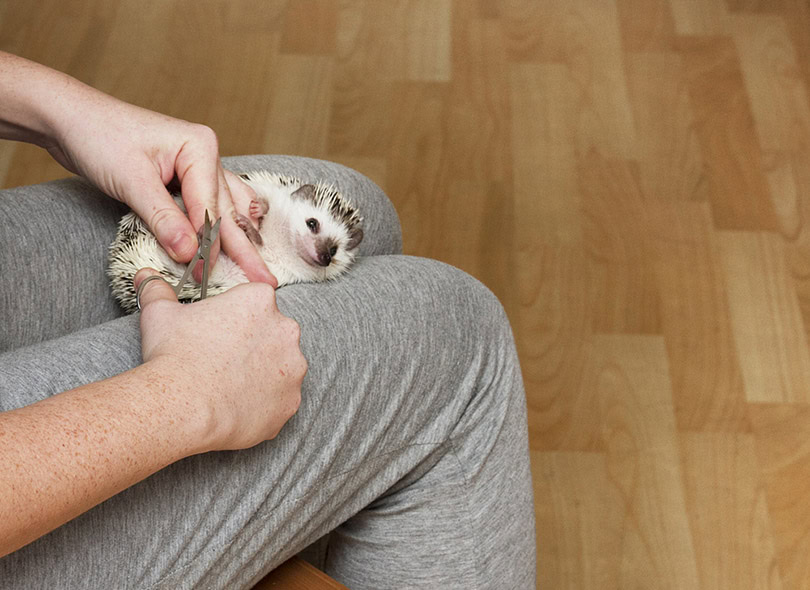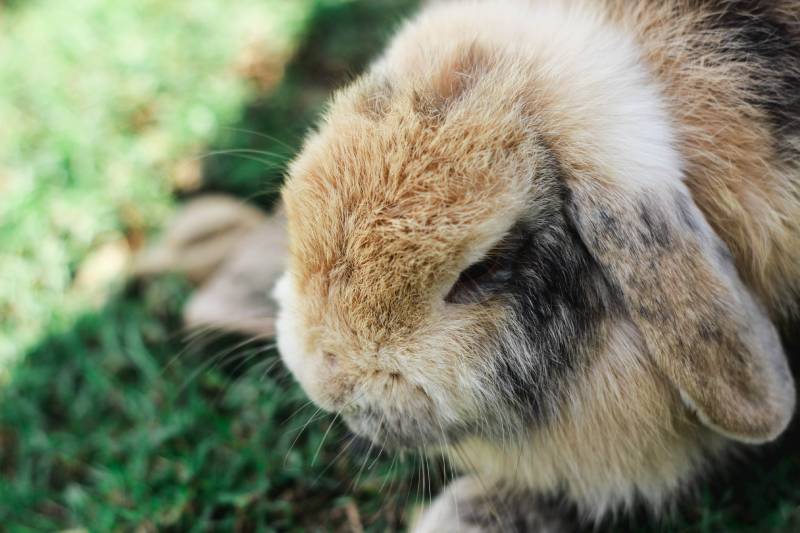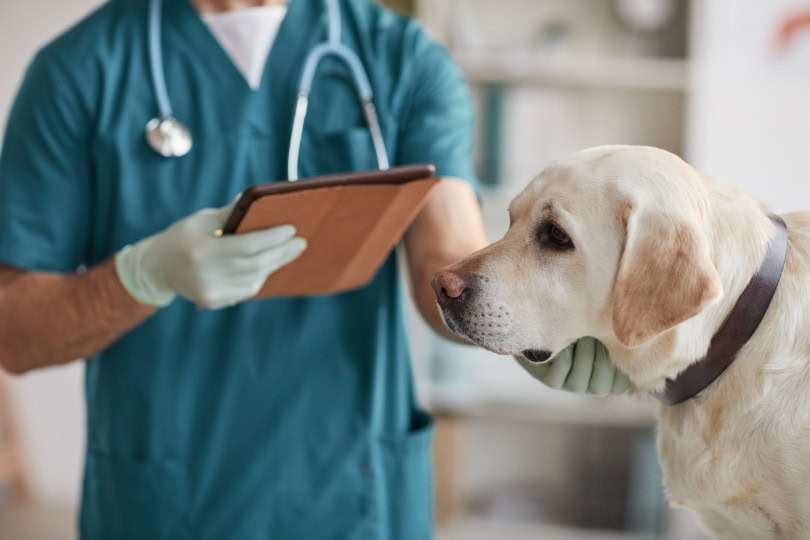VET APPROVED

The information is current and up-to-date in accordance with the latest veterinarian research.
Learn more »Halitosis or bad breath in dogs is so common that it even has its own name: doggy breath. However, while many owners treat canine halitosis as normal, it should always set off alarm bells, since it may indicate oral disease, or much less likely, other health problems. Fortunately, there are steps that you can take to improve your dog’s mouth health and freshen their breath.

The 6 Causes of Bad Breath in Dogs
It’s easy to recognize when your dog has bad breath. An offensive odor coming from your dog’s mouth should always trigger you to take action. If your dog’s breath is so malodorous that you can smell their approach before you hear or see them, it’s definitely an indication for a visit to the veterinarian as soon as possible.
There are a few possible causes of halitosis, including the following.
1. Periodontal Disease
This is by far the most common reason for halitosis. Around 80% of dogs over 3 years of age suffer from periodontal disease.1 Many of the signs can be difficult to spot; bad breath is one of the more obvious ones. Periodontal disease, which is inflammation affecting the tooth surrounding tissues, tartar (calculus), and mobile teeth are the most common canine dental ailments.
The best way to prevent plaque buildup, tartar formation, and infections is daily tooth brushing, but if tartar has already started to form, your dog will have to undergo a professional cleaning arranged by your vet.
2. Bad Eating Habits
Dogs have questionable dining habits. If they eat from the trash can or the cat litter, it can lead to bad breath. Ensure that trash lids are securely closed, keep full trash bags in a separate area that your dog can’t access, and put the tempting cat litter tray in a spot that your pup can’t reach.
Some dogs will eat their own poop and that of other dogs in the house. They might also eat decaying animal remains and drink from puddles. Dogs may also lick their bums and anal sac secretion. Keep an eye out for any dietary habits that might need training and overlicking certain areas, which could indicate a health problem.
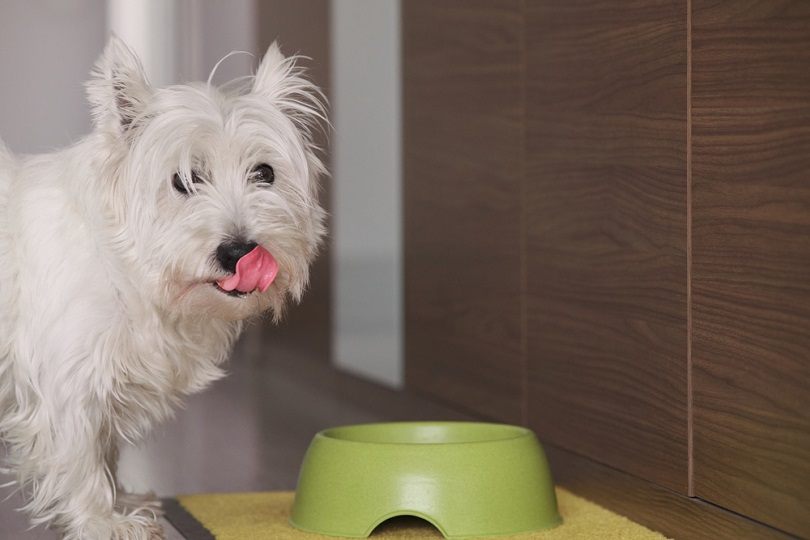
3. A Fishy Diet
Some foods have a persistent odor. Fish is especially smelly, so if you feed your dog a fish-rich diet, that peculiar odor may be normal.
4. Tooth Infection
Even a seemingly innocuous injury in the mouth or periodontal disease can cause an infection in one of your dog’s teeth, often called tooth root abscess. Infections are accompanied by a bad smell, and this could be what you’re smelling when your dog tries to give you kisses. A visit to your vet will help you understand where the problem is and how to solve it.
5. Other Mouth Diseases
There are times when bad breath is caused by problems not necessarily related to the teeth. A foreign body lodged in your dog’s mouth, or a tumor of the gum or tongue can also cause this sign. It is often accompanied by excessive salivation, discomfort, and apathy.
6. Illness
Halitosis can sometimes be an indication of a particular illness or disease. These will require veterinary intervention.
- Complication of Diabetes: If the smell coming from your dog’s mouth has a sweet fruity tinge to it, this could be ketoacidosis, a serious complication of diabetes. Your dog may also experience increased thirst and urination, vomiting, or lethargy. Ketoacidosis can be life-threatening, so your dog needs an urgent vet appointment if you suspect it.
- Kidney Disease: If their breath smells like ammonia, this is a potential indication of kidney disease. Besides being serious itself, it can be a sign of an even greater health problem.
- Liver Disease: If accompanied by yellow gums and signs like vomiting and listlessness, this could mean your four-legged friend has liver disease.

How to Fix Bad Breath: 6 Easy Solutions
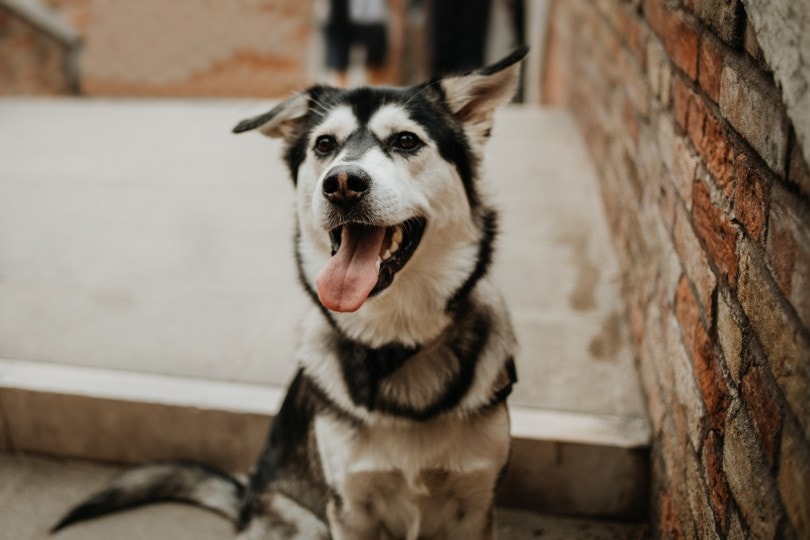
You should identify the cause of your dog’s bad breath before trying to fix it. Just giving them minty dog dental chews could be masking a much more serious problem.
Once your vet has checked your dog and identified the reason for bad breath, you can try the following steps to help eliminate the bad smell.
1. Brush Teeth
Brushing teeth is the most effective way to remove malodorous debris, remove plaque, and help prevent dental disease. Ideally, you should brush your dog’s teeth every day but at least three or four times a week to help stave off tartar and plaque.
Buy a finger brush, start when your dog is as young as possible, follow your vet or vet technician’s advice, and stick with a regular brushing pattern for the best results.
2. Change Diet
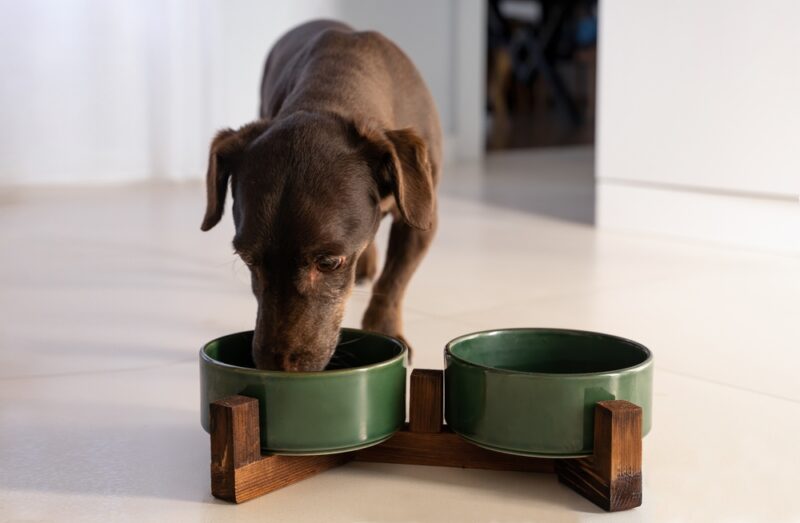
It stands to reason that the food a dog eats dictates the smell that comes out of their mouth. Switch from fish-flavored food to chicken-flavored, or just try a different brand to see if that can combat the problem. Also, chewing dry kibble could help remove plaque, so consider adding some dry food to their daily feeding schedule.
3. Do a Scale & Polish at the Vets
A professional cleaning by your vet is the only way to get rid of the tartar (calculus) in your dog’s mouth. By brushing daily you can remove the plaque that forms every day, but once the plaque turns into tartar it will only go away with an ultrasonic dental scaler (like the one our dentists use for us). Timely professional cleanings, combined with home brushing, are the best way to maintain your dog’s oral health. It’s important to address oral problems quickly, as waiting can lead to bigger issues like infections, tooth loss, or even more serious health conditions.
4. Give Dental Treats
Some dental treats can be a great help too. Choose those that are vet-recommended, with proven efficacy, and that aren’t loaded with calories and bad ingredients.
5. Offer Dog Chews
There are multiple types of dog chews in the market and the criteria to select one or the other depends on your dog’s age, the type of chewer they are, and the state of their teeth and gums. You have to take extra care with some of them, for example, rawhide bones can be dangerous and become a choking hazard if your dog swallows a large piece. Kong toys and bully sticks can be a good option, but your dog should always be supervised while chewing. If your buddy is a ferocious chewer, very hard chews could lead to bleeding gums and may make the problem worse. A sensible chewer, though, will benefit from the gnawing of the bone. Buy an appropriate size and material and consult with your vet if your dog suffers from dental disease or if in doubt.
6. Add Breath Freshener to the Water
Humans can use mouthwash to help keep their breath smelling fresh. While you won’t be able to convince your dog to gargle and spit a mouthwash out, you can get a dog-safe additive that you put in their water. The ingredients fight plaque, prevent tartar, and improve breath smells.
You should consult a vet if you believe an underlying health issue might be causing your dog’s bad breath.

Final Thoughts
Dogs can have questionable habits. They eat out of bins, scavenge the contents of cat litter, and lick their body parts. They are also unable to brush their teeth themselves, so bits of food and other debris can collect in the mouth, causing bad breath. Halitosis can also be a sign of illnesses, including ketoacidosis from diabetes and liver and kidney disease. You should always ensure that smelly breath isn’t a sign of a bigger problem by consulting with your dog’s vet. We have listed methods here to help get rid of the smell and improve your and your dog’s life.
Featured Image Credit: JACLOU-DL, Pixabay
